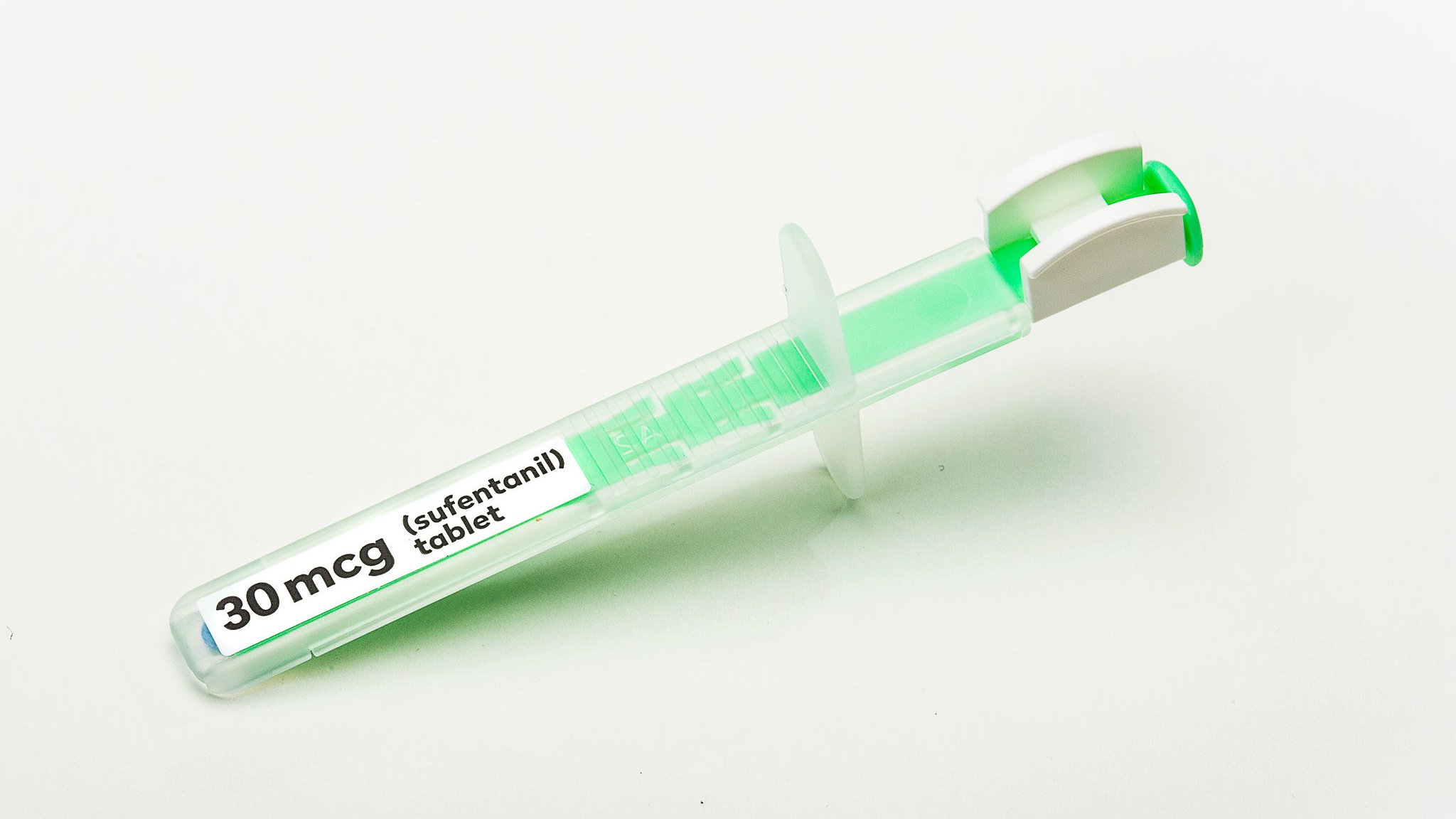Is the F.D.A.-Approved Dsuvia As Dangerous As It Seems?
The drug, called Dsuvia, is 10 times stronger than fentanyl and will be limited to medical use in hospitals and other supervised sites.

Dsuvia is a form of sufentanil, an opioid. Photo credit: Craig Sherod/AcelRx Pharmaceuticals, via Associated Press
Editor’s Note: This article was originally published in an edition of NOVA’s email newsletter, NOVA Lens, and has now been repurposed for NOVA Next. Sign up for NOVA Lens here (select “NOVA Newsletters”).
On Friday, November 2, the F.D.A. approved a new tablet form of sufentanil, an extremely potent synthetic opioid. The drug is called Dsuvia, and the decision to approve it has proven controversial.
Dsuvia is 10 times stronger than fentanyl, the parent drug that the F.D.A. approved for medical use in 1968—but which also has illegal correlates that have been linked to recreational drug use and deaths due to overdose.
The F.D.A. advisory committee responsible for evaluating the drug voted to recommend its approval in the absence of the committee’s chair, Dr. Raeford Brown. Dr. Brown later wrote a letter to top F.D.A. officials voicing his concerns. He and other critics of the F.D.A.’s assessment say that a drug this powerful risks abuse—especially given the escalation in illicit opioid overdoses in recent years (in 2017, it’s estimated that more than 72,000 Americans died from drug overdoses). After the final approval, F.D.A. commissioner Dr. Scott Gottlieb released a statement defending the decision, stating that Dsuvia is only delivered through a “pre-filled, single-dose applicator” and will only be admissible in medically-supervised environments.
There’s a particular type of person that might benefit from Dsuvia, experts say: soldiers wounded in the battlefield.
“Somebody in the army realizes that there’s going to be a time when a soldier in the battlefield needs to be given an analgesic [painkiller] in a safe way that’ll work quickly and last up to three hours,” says Dr. John Aldis, an addiction medicine specialist in the Eastern Panhandle of West Virginia. “And [Dsuvia] doesn’t need any syringes or needles; it can just be put under his tongue.” If a person is in the military, Dr. Aldis adds, his or her prescribing history will likely have been documented, giving those administering the drug added assurance as to whether or not the patient can handle the dosage.
The fentanyl skin patch, for example, is safe only if given to a person who has taken oral narcotics for severe pain. And Dsuvia itself, the brand-name form of sufentanil (a fentanyl analogue), is not prescribed. It is given in the hospital by a healthcare provider. This makes Dsuvia significantly different from OxyContin, which has a history of lax prescription behavior on the part of medical doctors—a practice that has led to its abuse and reputation as a “gateway” to other drugs like heroin and fentanyl, or cocaine-laced compounds.
And unlike past market-approved opioids, Dsuvia has a Risk Evaluation and Mitigation Strategy (REMS) document attached to it (here’s a PDF of the full REMS document for Dsuvia). This outlines the steps that the pharmaceutical company—in this case, AcelPx Pharmeceuticals—must take to monitor distribution of the drug and ensure that healthcare providers are using it properly.
“When OxyContin came out, they weren’t using REMS’s,” Dr. Aldis says. “The REMS is pretty important. It’s a way the F.D.A. says, ‘Okay, we’re in a new world now. We’re not in the OxyContin world anymore.’ They’re accepting the fact that narcotics are a big problem.”
The REMS document and the ease of administration, according to Dr. Aldis, are some of the clear advantages that Dsuvia has over other opioids that might be administered in extreme situations.
“You have to look at the pharmacodynamics of it,” he says. Dsuvia is absorbed effective and fairly reliably when placed under the tongue. “They know it does work and that is works uniformly pretty well every time it is given.”
Of course, the new drug isn’t a catch-all solution to instances of catastrophic pain, and it might not work for everyone. A person whose jaw has been blown off in battle might not have a tongue under which to place a Dsuvia tablet.
But worries about the introduction of a new fentanyl analogue might be moot; illegal derivatives of fentanyl, often originating in China, flood the streets already. “These people who are buying what they think is fentanyl, they may be buying this drug,” Dr. Aldis says. An F.D.A. approval makes it more subject to strict regulation.
Dr. Aldis adds that all of this is being taken very seriously, as it should be—proceeding with caution and regulation is critical. “This,” he says, “is a different time.”



